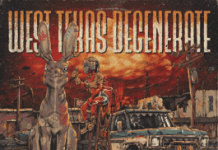BY ROBERT WHITLEY
Gaja, the Next Generation
Coming out of World War II, the vineyards of Italy and the families that tended the vines were devastated. Virtually everyone was poor at the time, so grape growers and winemakers tended to emphasize quantity over quality because wine was their currency.
The hangover from the war kept Italian wine on the skids for the better part of two decades, until a younger generation came along with the crazy idea that there was a different way of doing things.
“When I think of an artisan winemaker, I think of someone who has a crazy idea to do something that no one could ever imagine,” said Gaia Gaja of the Gaja wine family from Barbaresco, in the Piedmont region of Northern Italy. “Take Bolgheri, for example. At one time it was a swamp. You would never think to make great wine there. Then Sassicaia came along and proved it could be done. Now there are 50 wineries there.”
She was also talking about her father, Angelo, who took over the family winery in 1961, at the age of 21, and turned Gaja into one of the most important names in Italian wine over the next 50 years. The renaissance in Italian wine began with Angelo Gaja in Piedmont and Piero Antinori in Tuscany and continues to this day as Italy stands at the forefront of innovative winemakers with a passion for quality.
Gaia, with a degree in business, oversees that end of the Gaja operation these days though her father, nearing 75, is still active in winery operations on a day-to-day basis.
“I always knew I would go into the family business,” she told me on a recent trip to the United States to visit distributors and key clients. “I loved my grandfather and father, and I always wanted to share in what they had created, to work with them; not to finish but to continue what they started.”
And Gaia acknowledges that it was a crazy idea ever to think a small winery from Barbaresco could become the most famous producer of nebbiolo in the Piedmont.
“Barbaresco was always No. 2,” she said. “The most famous producers of nebbiolo had always been from Barolo. If you were making wine in Barbaresco, you were always trying to be Barolo.
“I am proud that my family could impose itself (in the market and world consciousness) with nebbiolo from Barbaresco. I am proud my father had the vision, that crazy idea that no one could have imagined. I am proud that he was such an innovator and crazy pioneer.”
Gaja, for example, was the first winery in the region to use barriques. Angelo’s work in the cellar was meticulous, and his respect for the work in the vineyards legendary.
Over time, he added two small wineries in Tuscany — Ca’ Marcanda in the Bolgheri district, making Bordeaux-style blends from cabernet sauvignon and merlot, and Pieve Santa Restituta in Montalcino, producing Brunello di Montalcino — to the Gaja stable and both benefit from the attention to detail that is the Gaja touch.
Angelo personally commutes to Tuscany from Barbaresco, sometimes a couple of times a week, to monitor the operations in Tuscany.
“He will be 75 soon, but he runs himself hard,” said Gaia. “This is his life. It is what he feels he has to do. Finally we got him to accept having a driver for the trips to Toscana. It helps him, because otherwise he was up at 4 o’clock in the morning to get ready for the drive to the wineries.”
Even with all of its success, Gaja continues to innovate.
The most obvious example is its decision to eschew a riserva designation for its Brunello, which would require an additional year in barrel.
“In the old days that might have been necessary,” Gaia explains. “The grapes did not get as ripe, and the extra time in the barrel was needed to soften the tannins and smooth the rough edges to make a riserva.
“But today we get that from the sun. The grapes are perfectly ripe when we make the wine. There is no need to leave the wine in the barrel longer. That would ruin it!”
Instead, Pieve Santa Restituta produces two “normale” Brunellos that are vineyard-specific. Of course, vineyard-designate wines are almost unheard of in Montalcino. So Gaja is breaking new ground. So what else is new?
Follow Robert on Twitter at @wineguru. To find out more about Robert Whitley and read features by other Creators Syndicate writers and cartoonists, visit the Creators Syndicate website at www.creators.com.
COPYRIGHT 2015 CREATORS.COM





